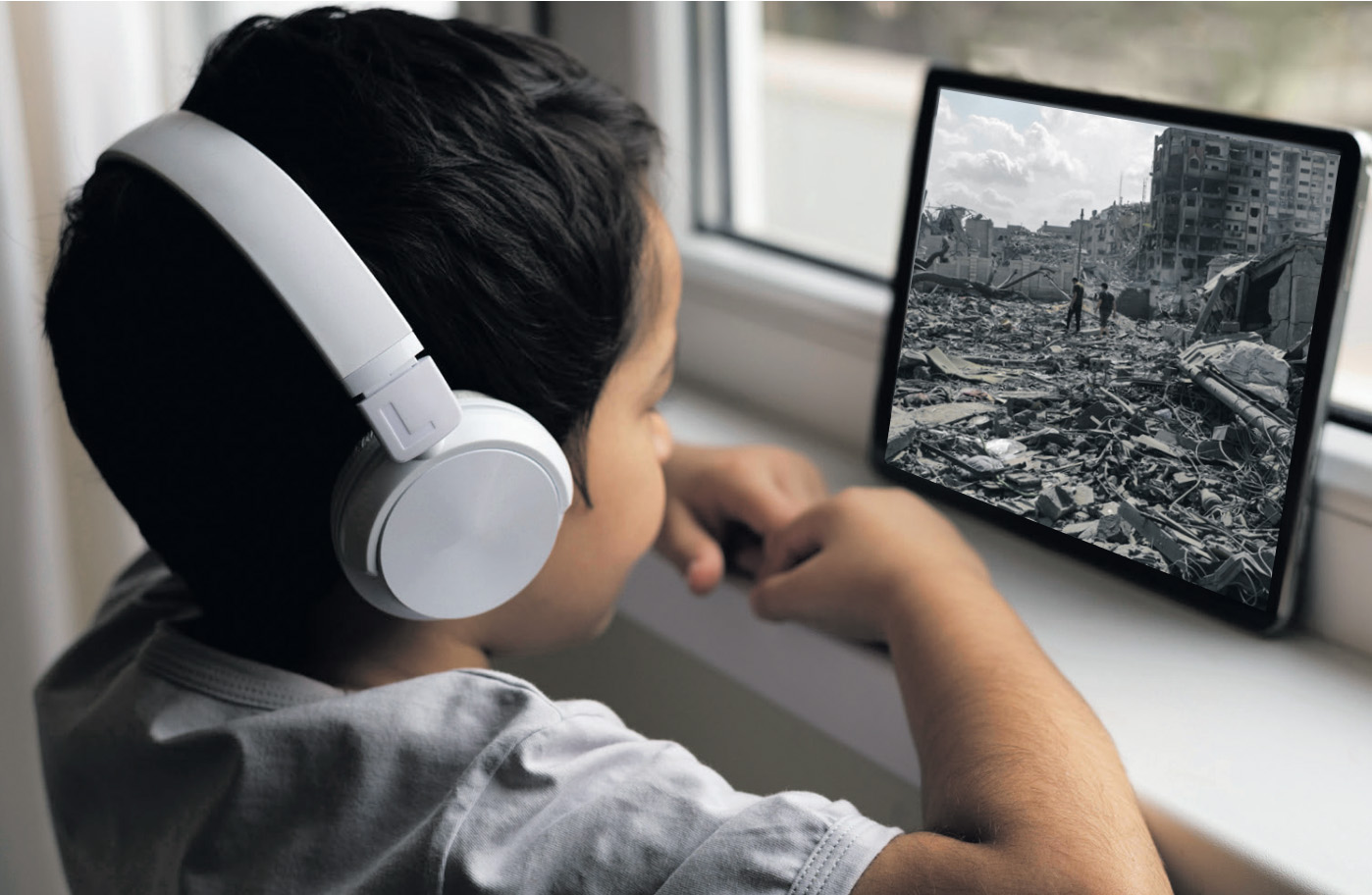In today’s screen-filled world, many children and teens have nearly continuous access to media. Estimates from the US suggest that school-age children spend four to six hours per day watching or using screens. Adolescents spend as much as nine hours a day on screens.
While media can open the door to learning and connections for children, it also carries the risk of exposure to violence.
News media in particular poses risks with stories of war, genocide, violent deaths, terrorism and suffering covered repeatedly in a 24-hour cycle. Research shows that violence and crime receive disproportionate media coverage. And this is partially because we are drawn to these stories; negative news headlines have been found to receive more engagement and clicks than positive ones.
On the internet today, children and teens have access to footage of armed conflicts, terrorist attacks, police violence, mass shootings and homicides. Violent news media in print, video or audio can be accessed any time and played over and over – along with commentary, analysis and framing that children may be susceptible to internalising.
As a trauma researcher and psychiatric nurse, I have studied the impact of trauma and vicarious trauma on children. Violent news media and its framing on the internet cannot be ignored when it comes to children’s mental health. Even the most media-savvy parents cannot fully control the content their children consume or the framings they internalise. Nevertheless, in my view, there are steps that can be taken to mitigate the effects.
Amplifying the fear
Analysis of news media can be useful in understanding events in some cases. But anyone with access to the internet can have their say – from recognised experts to teenage social media influencers. They may amplify a child’s fear without context.
After the 9/11 terrorist attacks in the US, researchers coined the term “secondary terrorism” to describe the way that news media framing added to threat perception and distress. As a result of exposure to violent media and accompanying framings, children may develop a distorted view of the world as a dangerous and hostile place. This, in turn, can lead to anxiety and hinder their ability to trust and engage with the world. It can also impair children’s sense of safety and security, making it difficult for them to develop a sense of optimism.
Studies have found risk for desensitisation, fear, anxiety, sleep disturbance, aggression and traumatic stress symptoms among children linked to violent media exposure in its many forms.
How can parents react?
Parents have to balance two opposing priorities. On the one hand, it is important to raise children who are informed citizens, cultivating age-appropriate skills to engage critically with events and injustices in the world. There is the devastating reality of school shootings and other public mass shootings that pose real threats to children, as do armed conflicts and terrorist attacks in many parts of the world.
On the other hand, parents must monitor consumption of media to reduce exposure to violence and the internalisation of fear-based perspectives on events that hurt children’s psychological well-being.
Parents, grandparents, teachers and other adult leaders in communities can take steps to strike this delicate balance. They must offer a consistent source of safety and context in children’s media-filled lives.
Read more in Daily Maverick: Children’s mental health and the digital world: how to get the balance right
First, it is important for adults to foster critical thinking about what children see and hear on the internet and in the media. Children and teens should be engaged in age-appropriate conversations about what they are witnessing and the context for violent events, especially when these are close to home. Open-ended conversations, exploration of feelings and validation of children’s experiences of sadness, worry, anger or fear can promote thoughtful dialogue and psychological safety.
Second, adults must be vigilant about setting boundaries on media consumption and monitoring the content children are exposed to. Watching or listening to media together and creating space for discussion can offer children support for making sense of difficult news content and allow parents to monitor a child’s response.
Finally, adults should be news media role models for their children. Children frequently copy the behaviour of their parents and other adults. Our own media consumption habits, reactions and ability to balance online life with positive real-life activities speak volumes to children.
With the world’s violence in the hands of children and teens, it is adults’ responsibility to guide them towards a nuanced understanding of the world while also providing psychological safety.
It’s essential to foster critical thinking, set boundaries and model responsible media consumption. These adult actions can empower the next generation to navigate an increasingly complex and interconnected world with empathy, emotional resilience and critical thinking. DM
First published by The Conversation.
This story first appeared in our weekly Daily Maverick 168 newspaper, available countrywide for R29.
 Page 1. Front page DM168. 02 December 2023
Page 1. Front page DM168. 02 December 2023




 Page 1. Front page DM168. 02 December 2023
Page 1. Front page DM168. 02 December 2023